Ontarians can begin downloading QR code COVID-19 vaccine certificates over next 3 days
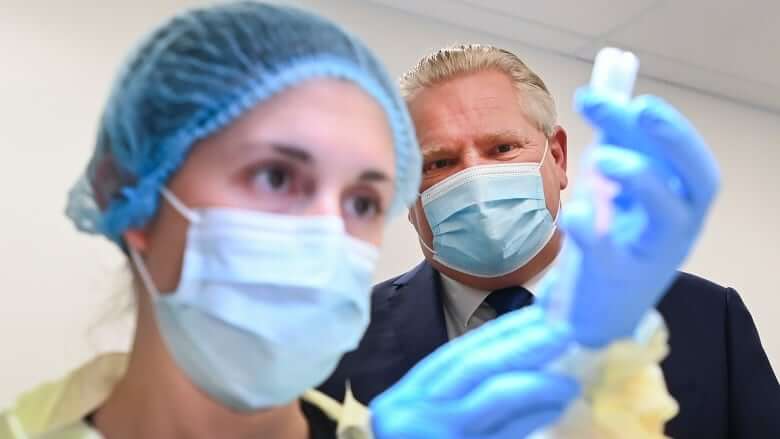
Ontario is making enhanced COVID-19 vaccine certificates with QR codes available for download beginning over the next three days, starting Friday morning with those born between January and April before expanding to more residents.
An update added to the Ontario Health site last night says that the initial, phased three-day rollout is intended to ensure a “smooth user experience” for those who want to download their enhanced certificate as soon as possible.
Ontarians with a birthday in the first four months of the year were able to obtain their QR code as of 12 a.m. ET today.
The next phases of the initial rollout include:
- May to August: Oct. 16
- September to December: Oct. 17
At 6 a.m. on Oct. 18 enhanced certificates will be available for all vaccinated Ontarians to download.
Enhanced certificates will prevent shutdowns : Ford
Those who are unable to download the certificate themselves can contact the Provincial Vaccine Contact Centre to have it mailed or emailed to them.
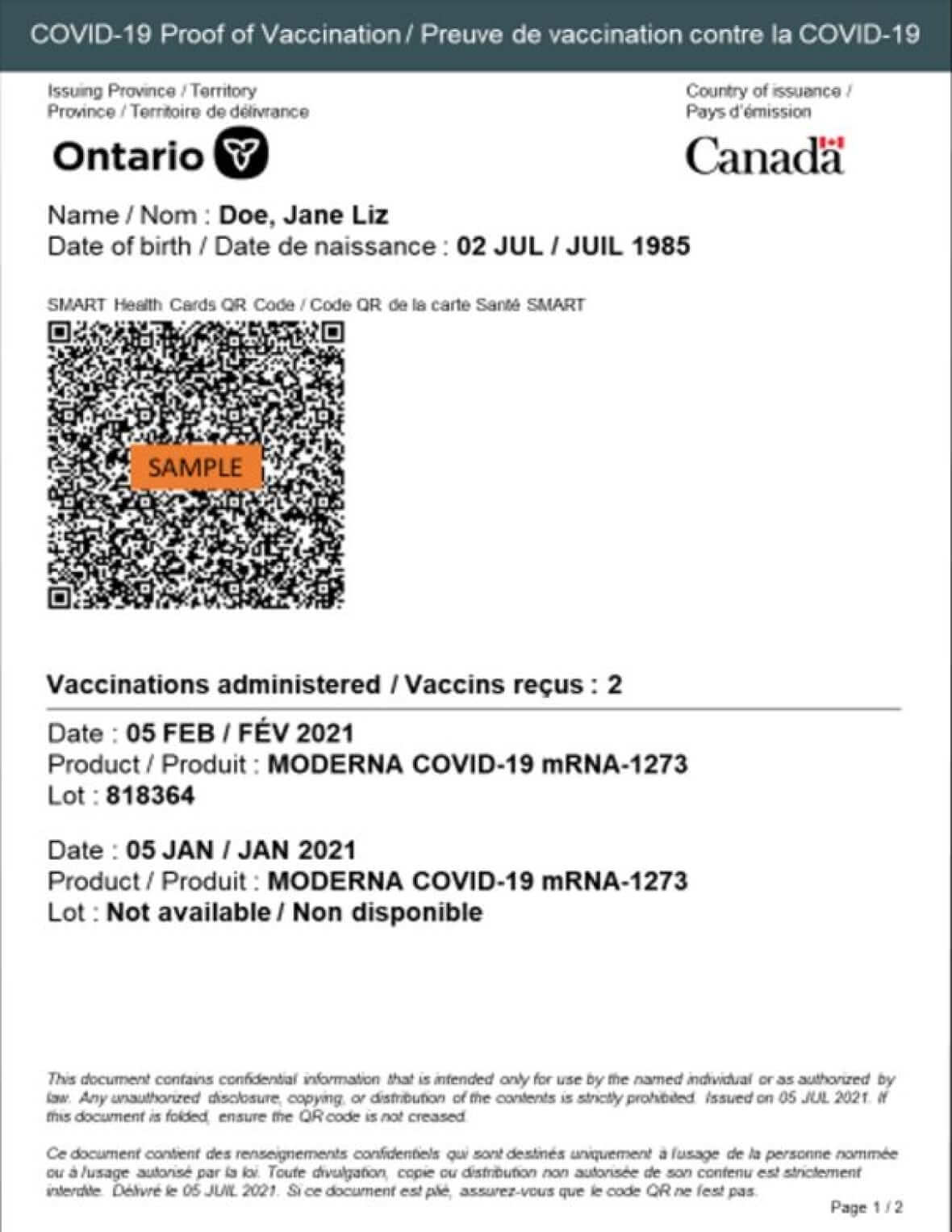
Enhanced certificates are not mandatory and Ontarians can continue using their current vaccine receipt if they wish.
At a briefing for media Friday, officials said the purpose of the QR code system is to make vaccination status screening more efficient for businesses and more secure for the public. Roughly 83 per cent of those eligible in the province have now had two doses of vaccine.
You can read the full briefing presentation provided to media at the bottom of this story.
The QR codes “mean we can allow businesses the comfort to keep operating safely,” Ontario Premier Doug Ford said at a news conference after the briefing.
“They mean we can continue to get back to doing things we want without losing the gains we’ve made,” he said, noting they will help prevent any further shutdowns in the province.
Officials said the QR codes will reveal less personal information than the current vaccine receipts do. The codes include a person’s name, date of birth and whether they have received two doses of vaccine, with their last shot at least 14 days prior.
It does not contain which brand or brands of vaccine a person received, or the specific dates of their shots. That information is included on the broader enhanced certificate itself, but is not transmitted through the QR codes, officials said.
Those who download a certificate can store it on their smartphones or use physical copies, which can also be scanned.
Verify Ontario app already live
Officials said the Verify Ontario app businesses will use to scan QR codes does not store any personal information. It was developed by the province in partnership with a team of software engineers at Maple Leafs Sports & Entertainment (MLSE).
The code used to create the app is open source, meaning it is freely available for others to use and has been posted online. It works on Apple and Android devices that were produced in about 2014 and after.
Verify Ontario went live online yesterday, rolling out in the Apple and Google app stores. After the code is scanned, a green checkmark will appear indicating a valid vaccine certificate, an X against a red background for an invalid certificate or a yellow warning for a QR that cannot be read.
Verify Ontario does not require an internet connection to work, though one is necessary for any updates to the app itself.
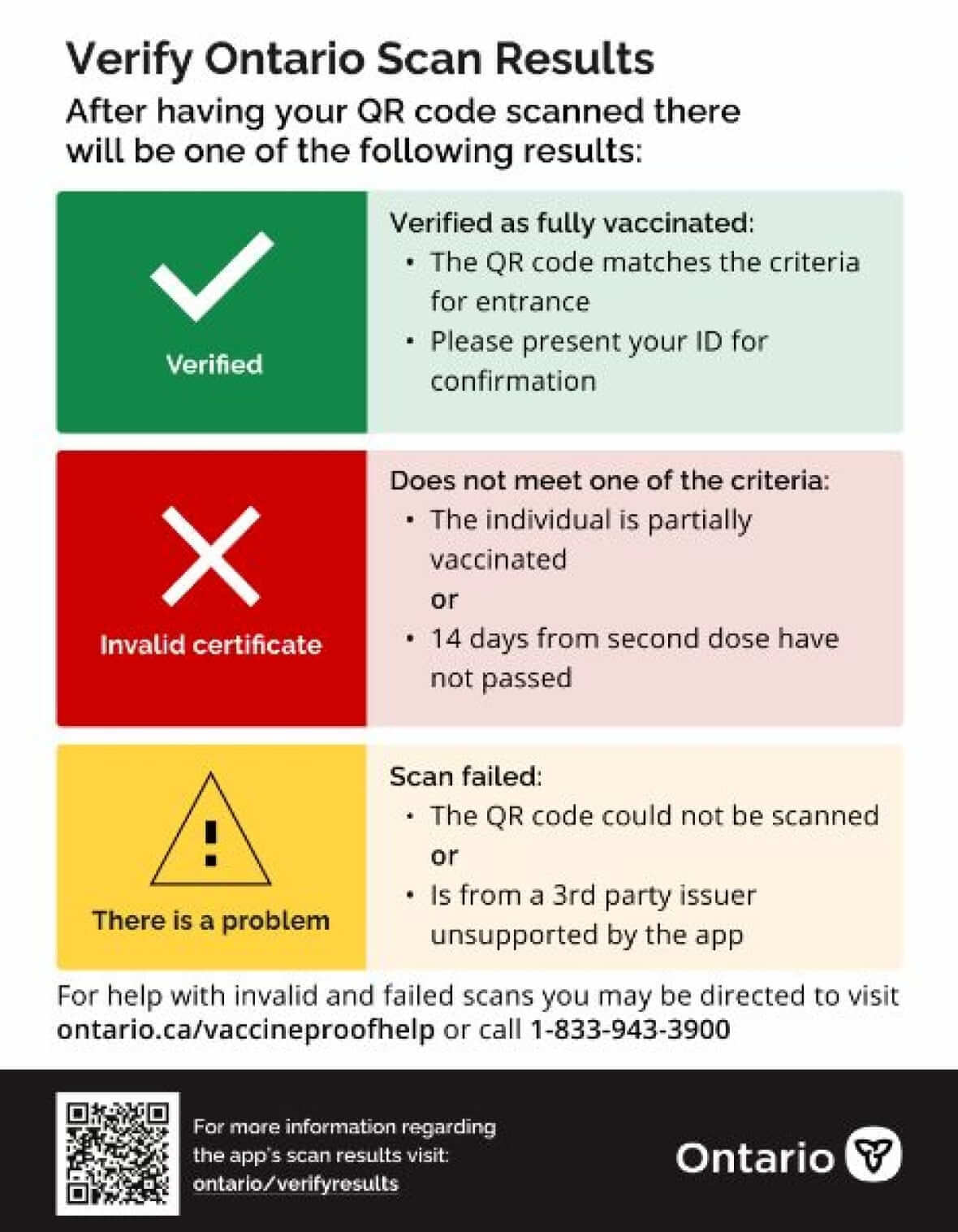
Those hoping to enter a business impacted by the province’s vaccine requirements will also need to show an approved form of physical identification that matches the name and date of birth in the QR code.
The intent is that eventually the app and QR codes will be compatible with those in use in other provinces and territories, though it will likely take weeks or months before that process is complete, officials at the briefing said.
The province is working to include valid medical exemptions to COVID-19 vaccines in the codes, but officials couldn’t say when that feature may be rolled out. It will include having proof of medical exemptions verified by local public health units, Health Minister Christine Elliott said at the news conference.
Under Ontario’s vaccine mandate policy, only those who have been fully vaccinated against COVID-19 — or have a valid medical exemption from a doctor — can access certain settings, such as theatres, nightclubs and restaurant dining rooms.
Ford defends capacity limit changes for big venues
On Wednesday, CBC News first reported that the Ontario government will announce plans next week to exit the Roadmap to Reopen.
The further easing of pandemic measures will include ending capacity limits in all locations where proof-of-vaccination requirements are in place, such as restaurants, bars and gyms, a senior official in the government said.
Speaking Friday, Ford said the coming plan will “withstand the test of time.”
“I’m not going to rush it, because with anything you do in this pandemic, you rush it and it can backfire on you.”
Ford and his government faced criticism this week from small business groups and owners upset that the province lifted capacity limits for some major venues, including several operated by MLSE.
The Ontario Chamber of Commerce and Canadian Federation of Independent Business called on Ford to explain the reason for allowing near-capacity crowds at Rogers Centre while continuing to restrict many small businesses.
Ford said there was consensus that included the province’s health table and chief medical officer of health, Dr. Kieran Moore, that select large venues could safely accommodate more people.
“We had consensus, we wanted to move on it,” he said of the announcement made last Friday.
Moore added that the plan expected next week will have specific dates and timelines for lifting remaining measures applicable to small businesses like restaurants and bars.
496 new cases of COVID-19
Meanwhile, Ontario reported 496 additional cases of COVID-19 and the deaths of two more people with the illness on Friday.
The seven-day average of new daily cases fell to 465.
Here are some other key pandemic indicators and figures from the Ministry of Health’s daily provincial update:
New school-related cases: 80, including 69 students and eight staff. Three of the 4,844 publicly-funded schools in Ontario are closed due to COVID-19.
Tests completed in the last 24 hours: 35,905, with a positivity rate of 1.4 per cent.
Active cases: 3,974, the fewest since mid-August.
Vaccinations: 29,762 doses were administered by public health units on Thursday. For a third day, more than 10,000 of those were first shots.





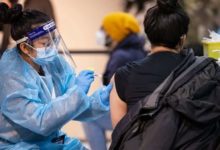
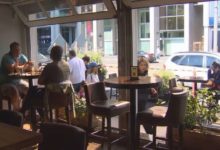
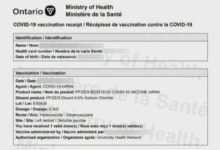
Redes Sociais - Comentários